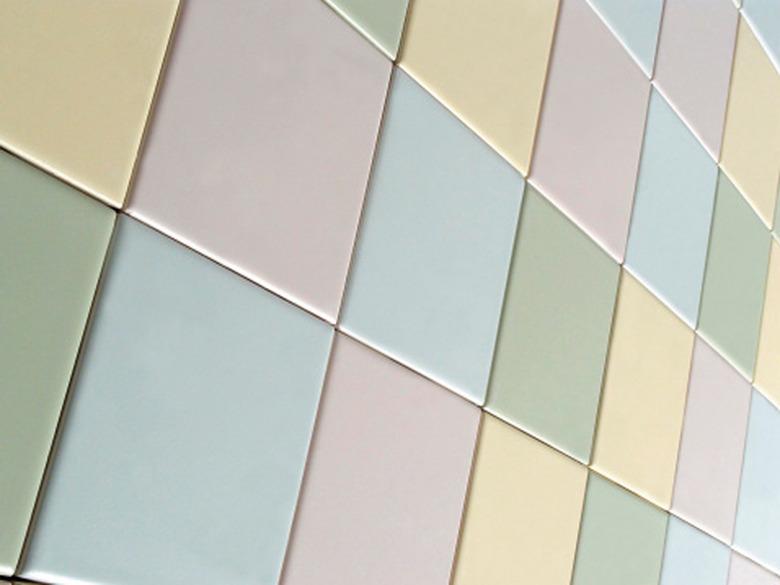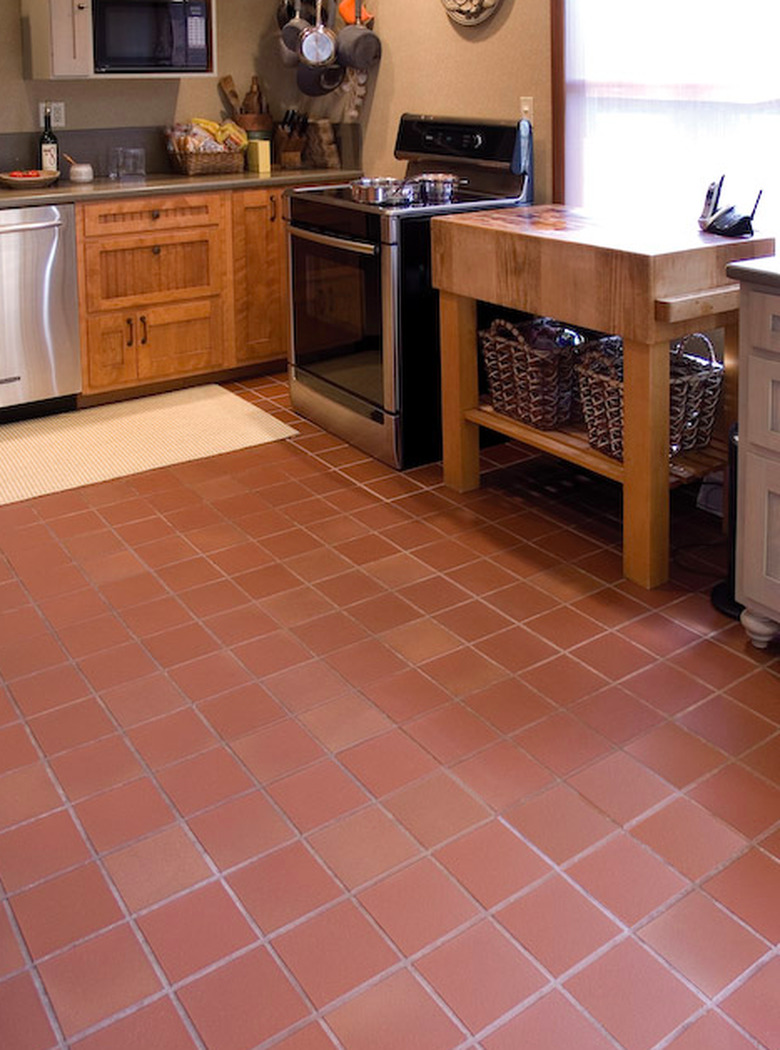Quarry Tile Vs. Ceramic Tile
Clay-based tiles have been used in and around homes for centuries. As various cultures developed techniques for producing tiles and technologies advanced, different types of clay tiles, each with its own characteristics, emerged. Included in this group are ceramic tiles and quarry tiles. Both are man-made from clay baked to high temperatures, but the similarities end there.
Ceramic Tile Production
Several methods are used to produce ceramic tiles. Extremely wet clay, called "slip," can be poured into molds to form the tile shape; wet clay can be extruded on machines before being sliced into tiles; or the clay may be shaped by hand into a mold. All clay tiles are first air-dried.
Some tiles are glazed immediately and fired to high temperatures. These tiles are frequently used for walls, as they are thinner and more fragile. Ceramic tiles that are fired, glazed and fired again are stronger, thicker, and can be used as floor tiles. All ceramic tiles are glazed, which provides the tiles with a water-resistant covering. Without this glaze, the tiles are likely to absorb moisture and stains.
Ceramic Tile Appearance and Use
All ceramic tiles are suitable for wall use or backsplashes. Ceramic tiles with smooth, noncrazed finishes are also suitable for use in shower areas. Some ceramic tiles — those that are thicker, have matte finishes and which have been fired twice — can be installed as floor tiles.
Ceramic tiles can be smooth-edged and even, with glossy, matte or crackled finishes. They can also be handmade with uneven surfaces and textures, embossed with three-dimensional patterns or textured with an antique finish. Because of the wide range of styles and colors available, ceramic tiles are suitable for nearly every style of home. They are fairly low-maintenance — just apply sealer to tiles with crackled or crazed finishes, and sweep and damp mop other tiles.
Quarry Tile Production
Quarry tiles are made of red clay that is either hand- or machine-shaped. The quarry tiles are dried before being fired in large beehive-style kilns. The clay is fired to extremely high temperatures — much higher than ceramic tiles — which renders the quarry tiles naturally dense, nonporous and water resistant with a low water absorption rate.
While quarry tiles can be glazed, most are left in their natural finish, or unglazed. The tiles can be arranged in various areas of the kilns to produce a variety of colors, ranging from tan to dark brown, as well as markings known as "iron-spots" and "flashed" tiles. The quarry tiles may be sorted after firing for color, or they may be left mixed for variation.
Quarry Tile Appearance and Use
Quarry tiles can be installed on the walls but are most often used in floor tile applications, both inside and outside the home. Quarry tiles have very low water absorption rates, which makes them ideal for wet areas, high-traffic areas, and kitchens.
Quarry tiles are thick — 3/8 to 1/2 inch, depending on size — and are available in sizes ranging from small mosaic tile sheets to 12-inch squares. Hexagons, rectangles and some octagonal shapes are also available. Quarry tiles can be smooth or lightly textured, depending on color and finish. They may vary dramatically in color or markings from one to the next, or they may be more uniform, depending on the manufacturer. Quarry tiles are very low-maintenance. They do not require sealing — just sweep and damp mop as needed.

